June 17 (Lunar calendar: April 30), 2023 Saturday | Dawnxisoul393art
These days, we can't go far because there is a typhoon in Guangdong near Hong Kong, which affects Hong Kong. Hong Kong often has strong winds, sometimes strong and sometimes weak. For a long time, we have wanted to take our daughter to the Qiang Shan Kuan Yin Temple on Lantau Island to pay homage to the Goddess of Mercy and to sketch. Since Qiang Shan Kuan Yin Temple is not far from Mui Wo, we took the opportunity to go there. However, the Kuan Yin Temple in Qiang Shan has been closed recently, so we could only take our daughter to see how it looks like and explain to her about Kuan Yin Temple and Kuan Yin Bodhisattva. She is still very young and it is still hard for her to understand many life lessons. One day, when she grows up, we hope she can read our words here. We took a bus from the Mui Wo ferry terminal to the bus stop near Kuan Yin Temple. After getting off the bus and walking forward, we saw the signpost. Crossing a slope, passing a bridge and a pagoda gate, we came to Kuan Yin Temple in Qiang Shan.
Illustrated by dawnxisoul393
Kuan Yin Temple in Qiang Shan is not a big place, but the scenery is very beautiful. Before Covid-19, we often went to Qiang Shan Kuan Yin Temple to worship Kuan Yin, and sketch and paint. At that time, we sometimes had the opportunity to meet the presiding elder of Qiang Shan Kuan Yin Temple, Elder Rong Ling, who was already 90 years old at that time, full of spirit and kind, making people feel warm. The temple was first built on Lantau Island in 1910. In addition to visiting the temple, people could also enjoy vegetarian meals in the temple. It attracted many vegetarians. Kuan Yin Temple on Lantau Island has the Three Treasure Hall on the second floor, the Sutra Pavilion on the second floor, and the Ten Thousand Buddha Pavilion on the top floor with ten thousand statues of Buddha. The temple was opened by the female monk Yip Sin Hoi (also known as Tung Koo), who built five purification rooms called "Ja Sin Tong", also known as "Peng Ying Cave".
In 1941, the temple became a dedicated Buddhist site. The present temple was rebuilt in June 1990 with an area of 8,200 square meters. Two years later, on January 3, 1993, the inauguration ceremony of the reconstruction was held. The new temple is 24 meters high and divided into three levels, representing the three treasures of Buddha, Dharma, and Sangha, hence the name. The top floor was the Pavilion of Ten Thousand Buddhas, the building dome surrounded by 10,000 Buddha statues, with five Buddhas in the middle, the central Dainichi Nyorai, with a Dharma body 1.2 meters high, and the other Buddhas, each 1 meter high, located in the southeast and northwest, collectively known as the Five Wisdom Buddhas. The middle floor was the Buddhist Sutra Building, which housed the twelve Buddhist sutras and the Buddhist texts of the Great Tibetan Sutra and enshrined three great virtues, including Kuan Yin Bodhisattva, Manjushri Bodhisattva, and Pushyin Bodhisattva. On the ground floor was the Kuan Yin Hall, which enshrined the statue of Kuan Yin Bodhisattva, who held the Dharma weapon in his hand and protected all sentient beings. The 4.9-meter-high eleven-sided, thousand-armed, thousand-eyed statue of Kuan Yin was flanked by eight vivid wooden statues of Luohan, each more than two meters tall, forming a wonderful image of Luohan accompanied by Kuan Yin Bodhisattva.
Illustrated by dawnxisoul393
The four walls had four bronze paintings of Kuan Yin Bodhisattva made in Japan, each 3.6 meters high and 5.54 meters wide, depicting Kuan Yin Bodhisattva showing the 32 bodies and the great wish to hear and save the suffering, which was a rare Buddhist art bronze painting in the temple. The two compartments outside the main hall were laid out in parallel. The right side had a drum tower, while the left side was built with a bell tower and a guest hall. The temple bell inside the hall weighed more than a thousand pounds, and its clear sound resonated through the area of Qiang Shan and Deer Lake. The most compassionate and influential person in Buddhism was Kuan Yin, the Bodhisattva of great mercy and compassion. So, what was the identity of Kuan Yin Bodhisattva, who was so influential but could not become Buddha, why was that? In Buddhism, Kuan Yin Bodhisattva was originally the great prince of the ancient king of the heavenly kingdom of Chakra, and the prince vowed to relieve the suffering of all sentient beings in the world. Later he cultivated his Buddha body, but because the vow he made before was too big to be fulfilled, he could not become a Buddha, but only a Bodhisattva second only to the Buddha, namely the Great Compassionate Bodhisattva Kuan Yin.
Although he is not a Buddha and does not have the highest status in Buddhism, he has become the most influential god in Buddhism. After cultivating the Buddha body, he was willing to take the Bodhisattva body to save the world and teach others. His Holiness approved his request to practice the Bodhisattva Way and gave him the name Kuan Yin. Since then, Kuan Yin Bodhisattva has been saving the suffering, regardless of virtue or virtue. Guanyin Bodhisattva is the most influential and widely spread belief of Buddhism among the people. With 14 divine powers to fearlessly bestow on all sentient beings, Kuan Yin Bodhisattva is widely worshiped among the people, and the phenomenon of "Maitreya Buddha in every household and Kuan Yin in every family" once existed. Kuan Yin Bodhisattva represents compassion and the willingness to help others. Seeing the suffering of all sentient beings, he immediately lends a helping hand. Therefore, we praise Kuan Yin Bodhisattva as the "Thousand Hands and Thousand Eyes".
Illustrated by dawnxisoul393
This is a metaphor, not really having a thousand hands and a thousand eyes, but praise of a shrewd and capable person who is "all-powerful with both hands". As long as the Bodhisattva sees it, the helping hand will arrive immediately. Buddhists believe that holding activities such as reciting Buddha's name, chanting sutras, holding mantras, and releasing the dead on Kuan Yin Bodhisattva's memorial day is a great merit. Before the Northern and Southern Dynasties, statues of Kuan Yin Bodhisattva were all male. According to Taoism, Kuan Yin was a female practitioner who turned to Buddhism with some of her fellow disciples after becoming a deity because she wanted to help people in the world with her Buddhist philosophy. And the Buddhist record is that Shakyamuni Buddha asked Kuan Yin Bodhisattva to take on a female form and go into the world to save suffering and cultivate goodness. From then on, Kuan Yin Bodhisattva took on the form of a slender, graceful, and beautiful woman. It is recorded in the canonical texts that the Bodhisattva incarnated as a woman, carrying a fish basket, and taught the world to recite the Buddhist scriptures so that they would be remembered by the world.
Therefore, after the Tang and Song dynasties, statues and paintings of Kuan Yin Bodhisattva appeared with the body of a woman. When it comes to "Kuan Yin Bodhisattva", the image of Kuan Yin Bodhisattva traveling in the mercy voyage and helping people has long been deeply rooted in people's hearts, and people devoutly worship Kuan Yin Bodhisattva, eager to seek the Bodhisattva's compassionate protection. In life, sometimes when we encounter something unpleasant, we think of asking for Bodhisattva. We believe that as long as we are sincere enough, burn more incense, kowtow more, and move the Bodhisattva more, the Bodhisattva will help. In fact, this may be a misunderstanding of Buddhism. Kuan Yin Bodhisattva regards all sentient beings as equal, the Bodhisattva does not have any distinction and will not treat sentient beings differently. In real life, we sometimes pursue the magical power of Bodhisattva, but we may ignore that the greatest truth of destiny is "cause and effect".
Illustrated by dawnxisoul393
Human blessings are not something that can be begged from God and Buddha, blessings come from our own cultivation, from goodness. It is an illusion if we don't work hard and just want to sit back and enjoy and let unicorns fall from the sky. Everything in the world is the result of cause and effect. In order to reap the harvest, we have to plow, sow in the spring, and harvest in the fall, and so is fate. Good and evil will be rewarded in the end, just sooner or later. We should not complain that Kuan Yin Bodhisattva does not work, we should reflect on whether we ourselves have put enough effort into it. "Causality" tells us that our destiny is in our own hands. We worship the Bodhisattva, not just to desire the help of the Bodhisattva, but more to learn the compassion and wisdom of the Bodhisattva. May we do good and plant perfect blessings and vast wisdom.
Original by dawnxisoul393,






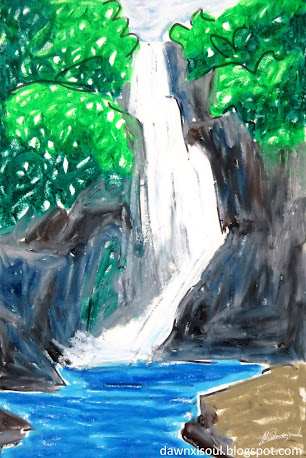
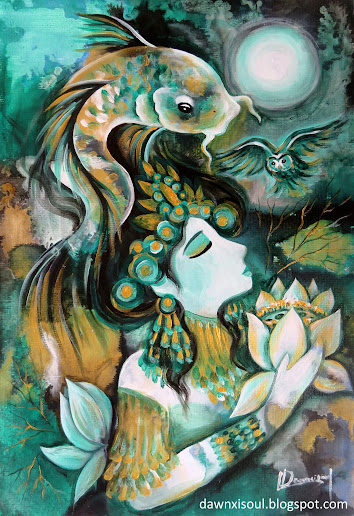

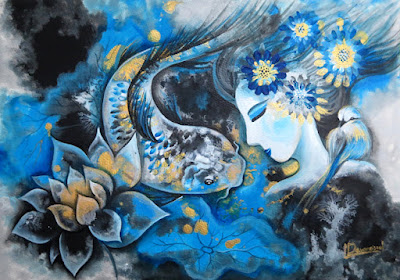
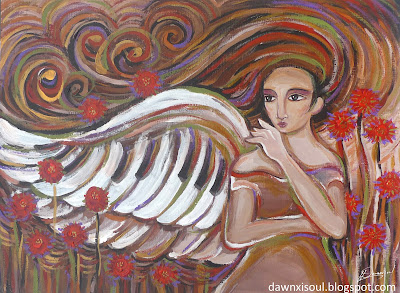
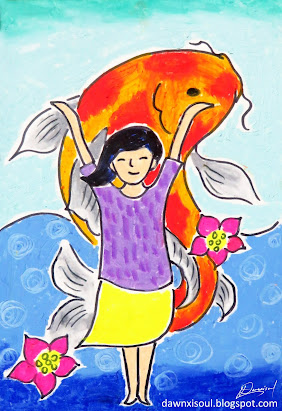


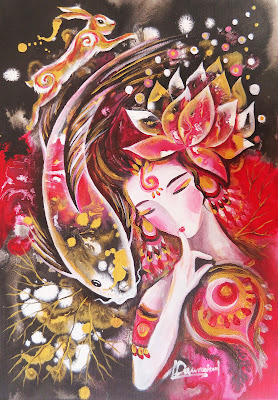
Comments
Post a Comment